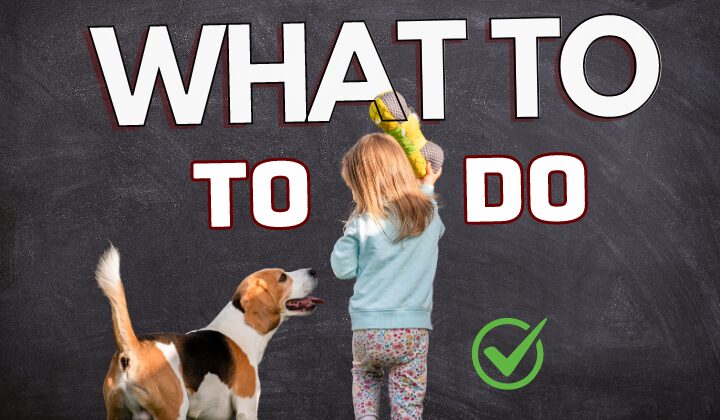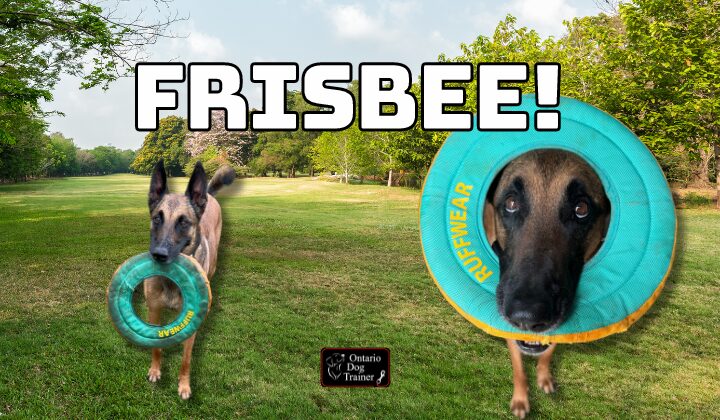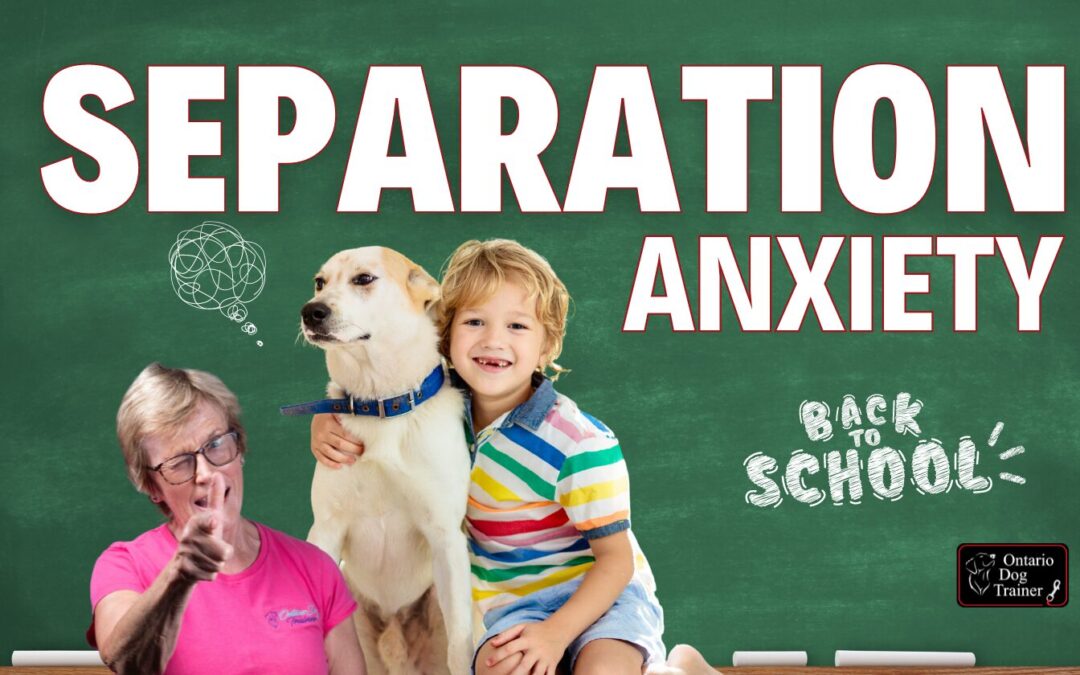As the summer winds down and school ramps up, families everywhere are shifting from the lazy days of vacation to the rigid routines of early mornings, packed lunches, and chaotic school drop-offs. While this transition brings its own blend of excitement and stress for everyone involved, it’s essential not to overlook the effect it has on our four-legged companions. Many dogs, having basked in the constant companionship over the summer, suddenly find themselves alone for hours on end. This abrupt change can trigger dog separation anxiety—a challenge that can lead to a range of behaviors from incessant barking to tearing up the furniture.
Luckily, with a bit of foresight and some gradual adjustments, you can help your dog glide through this transition. Let’s dive into some strategies to build up your dog’s comfort with being alone, tweak their walk routines to match the new school schedule, and keep them safe as the neighborhood streets get busier.
Understanding Dog Separation Anxiety
Before we jump into the solutions, it’s crucial to get a grip on what dog separation anxiety actually is and how it messes with our pups. Dog separation anxiety kicks in when a dog gets overly freaked out about being left alone. The symptoms? Think whining, barking, pacing, chewing, and even wild attempts to bust out of the house. This isn’t just some minor inconvenience—it can seriously affect both your dog’s well-being and the peace of your home. Especially for dogs who are tightly bonded with their families or haven’t had much solo time, this is a big deal.
How Can I Help My Dog With Separation Anxiety When School Starts?

Gradually Building Up Alone Time
One of the best ways to nip dog separation anxiety in the bud is to slowly ramp up the time your dog spends alone before school starts. This gives them a chance to get used to it in small doses rather than being thrown into the deep end.
- Start Small: Begin by leaving your dog alone for just a few minutes—yes, even if it’s just stepping out to check the mail. When you return, give them a little praise and maybe a treat to show them that being alone isn’t something to freak out about.
- Increase Duration Slowly: As the school start date creeps closer, gradually lengthen your time away. The trick is to do this so slowly that your dog doesn’t even notice. If you start with five minutes, bump it up to ten the next time, then fifteen, and so on. This gradual increase helps mitigate dog separation anxiety by allowing your dog to adjust comfortably.
Preparing for the Transition: Gradual Changes in Routine
- Start Early with Alone Time Training A few weeks before school starts, begin getting your dog used to being alone. Start with short periods and build up gradually. This will help your dog understand that being alone is just part of the day—not something to stress over. This is key to managing dog separation anxiety effectively.
- Create a Consistent Routine Dogs thrive on routine, so set up a new schedule that matches the school day. Feed them, walk them, and play with them at the same times every day. This consistency helps reduce dog separation anxiety by making their day predictable.
Morning Exercise Routine
A well-exercised dog is a happy dog, and an essential part of easing dog separation anxiety is making sure they get properly structured morning exercise for both brain and body. Thinking as they move (as when walking nicely beside you on a leash) not only keeps them fit—it sharpens their brain function and also burns off that extra energy that could otherwise turn into anxiety-fueled destruction while you’re gone. A thinking, well-exercised dog is a fulfilled dog.
Evening Wind-Down
Just as vital as the morning workout is the evening wind-down. Establishing a calming evening routine can help your dog settle in for the night and prepare for the next day, reinforcing that sense of security they crave, which is especially important for dogs prone to separation anxiety.
- Adjust Walk and Playtimes Shift your dog’s walk and play sessions to fit the new school schedule. If they’re used to a leisurely morning stroll, start moving it earlier in the day. This ensures they get their mental and physical activity while adjusting to the new timing, which is crucial for managing dog separation anxiety.
- Practice Departures and Arrivals Get your dog used to the idea of you coming and going without making a big deal out of it. When you leave, do it calmly and without fuss. Same goes for when you return—greet them in a low-key way to show them that this is just part of the routine. This low-key approach helps prevent the onset of dog separation anxiety.
Adjusting Walk and Play Routines
As the school year begins, the need to tweak your dog’s daily schedule becomes obvious. They might be used to spontaneous outdoor activities during the summer, but now it’s all about fitting in their walks and playtime around the school day. Here’s how you can manage that:
- Pre-School Walks: Start the day with a brisk walk or a game of fetch before everyone heads out. This not only gives your dog the exercise they need but also helps calm them for the day ahead, reducing the chances of dog separation anxiety.
- After-School Activities: Plan some quality playtime or a walk once the kids are home from school. This helps your dog burn off any pent-up energy and gives them something to look forward to. Consistent activity can greatly reduce dog separation anxiety.
- Weekend Fun: Don’t forget the weekends! This is your chance to go all out with longer walks, hikes, or a trip to the dog park. Keeping your dog mentally and physically stimulated will ease your dog’s separation anxiety during the week.
The Secret to a Happy Dog? Mental Workouts!
You know how they say a tired dog is a happy dog? Well, that goes for their brains too. In reality, a fulfilled dog is a happy dog. Mental stimulation is just as important as a good old game of fetch (though they’d never admit it). When your dog’s mind is busy, they’re less likely to get bored and turn your home into their personal chew toy wonderland. And with everyone out of the house during the day, keeping their brain engaged becomes even more crucial.
- Play Frisbee! Get Outside and Play Frisbee! Let’s not forget one of my all-time favourite ways to keep a dog entertained—a good old-fashioned game of Frisbee.

If you follow me on Instagram, you’ve probably seen Prince and I in action. There’s nothing like the sheer joy on a dog’s face when they leap into the air to catch that flying disc. It’s great exercise, combined with a fantastic way to bond with your dog. Plus, it gets both of you outside, away from screens and into the fresh air.
Frisbee more than just physical exercise; it’s a mental game too. Your dog has to focus, time their jumps, and figure out where that disc is going to land. It’s a workout for the brain and the body, and let’s face it—it’s just plain fun.
If you’ve got a dog with a lot of energy, a few rounds of Frisbee can be the perfect way to tire them out before you leave for the day. And if you’re worried about separation anxiety, a tired and fulfilled dog is much more likely to nap while you’re gone, dreaming about their next big catch.
- Puzzle Feeders: If your dog thinks they’re the Einstein of the canine world, challenge them with a puzzle feeder. These toys require them to solve a little puzzle to get to their food. It’s like hiding veggies in a kid’s dinner, except your dog will actually enjoy it. Plus, it slows down those chowhounds who think every meal is a race.
DIY Fun for the Budget-Conscious Dog Owner
Let’s be real—dogs don’t care if their toys are fancy. Sometimes the best entertainment comes from a little creativity (and a lot of peanut butter).
- Frozen Treat: I usually grab a hollow bone, stuff it with raw food, add some salmon or other essential oils, and finish it off with a sprinkle of Smack Petfood’s nutritious powder. Then I pop it in the freezer. Not only does this keep my dog engaged for a good while, but it’s also a healthy, tasty treat that’s perfect for hot days or when I need a little quiet time around the house.
Related: My dog’s favourite raw treats for training, SMACK!
- Hide and Seek: Hide treats or toys around the house or yard and let your dog’s inner detective go to work. It’s fun, it’s rewarding, and it’ll tap into all of their natural dog senses to tire them out.
Even the best toys can get boring if they’re always lying around. To keep things fresh, try rotating your dog’s toys. Put a few away for a week or so, then bring them back out like they’re brand new. Your dog will think it’s Christmas every time you reintroduce an old favourite.
Trust me, this little trick can work wonders for keeping their interest—and keeping your shoes safe.
So, while the house might be quieter (and a little lonelier) without the kids, with the right activities, your dog can stay happy, busy, and anxiety-free. And who knows, by the time they’re done with their puzzle toy, they might even forget that the kids are gone—at least until 3 PM.
Safety Considerations: Increased Traffic
As school kicks in, traffic picks up, which can be a whole new source of stress for your dog. Here’s how to keep them safe and calm:
- Leash Safety: Always keep your dog on a leash in busy areas. The increase in traffic can be overwhelming, even for well-trained dogs, leading to unexpected behaviour. Leash safety is particularly important if your dog is already dealing with separation anxiety.
- Reflective Gear: With shorter days ahead, consider some reflective gear for those early morning or late evening walks. It’s all about keeping you and your dog visible and safe, especially if they’re prone to anxiety in new or busy environments.
- Route Planning: If you can, choose quieter routes for your walks to avoid the chaos of school traffic. This can help reduce your dog’s overall stress levels, which can be heightened by dog separation anxiety.
Additional Tips for a Smooth Transition
While those strategies are crucial, here are a few extra tips to make life easier and keep dog separation anxiety at bay:
- Interactive Toys: Keep your dog busy while you’re away with puzzle toys or treat dispensers. This keeps their mind occupied and can reduce dog separation anxiety.
- Consider a Dog Walker: If your dog really struggles with being alone, consider hiring a dog walker or asking a neighbour to drop by. A midday break can make all the difference, especially for dogs prone to separation anxiety.
- Veterinary Advice: If the anxiety is severe, don’t hesitate to talk to your vet. They can offer advice or even suggest treatments to help your dog cope with separation anxiety.
I’m Karen Laws the Ontario Dog Trainer, with a bit of planning and patience, you can help your dog navigate this transition smoothly, keeping dog separation anxiety at bay and ensuring everyone’s school year starts on the right paw.
Need Dog Training Help?
Please fill out my assessment form. Whether it’s online or face-to-face, let’s get your dog’s behaviour sorted.
Need Immediate Help with Your Dog? Book an Online Coaching Session with Me Today!
Click here to schedule your session and get expert guidance tailored to your needs. Don’t wait—your path to a better relationship with your dog starts now! Learn More about the Coaching Hub for Pet Owners.
Are you a Dog Trainer Looking to Grow Your Dog Training Business?
Book a free call with me. We’ll talk strategy, not magic, to boost your dog training business.
Get Daily Dog Training Advice
Follow me on Instagram, Facebook, YouTube and LinkedIn!
References:
- ASPCA. (n.d.). Separation anxiety in dogs. Retrieved August 29, 2024, from https://www.aspca.org/pet-care/dog-care/common-dog-behavior-issues/separation-anxiety
- American Kennel Club. (n.d.). Separation anxiety in dogs: How to help your pet. Retrieved August 29, 2024, from https://www.akc.org/expert-advice/training/dog-separation-anxiety/
- VCA Hospitals. (n.d.). Separation anxiety in dogs. Retrieved August 29, 2024, from https://vcahospitals.com/know-your-pet/separation-anxiety-in-dogs
- Humane Society. (n.d.). Separation anxiety in dogs. Retrieved August 29, 2024, from https://www.humanesociety.org/resources/separation-anxiety-dogs

